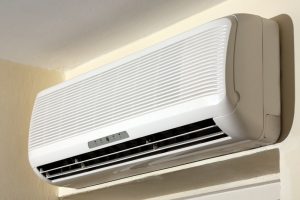 We are in a bit of swing season as far as weather goes right now. Things are certainly starting to warm up, and even nighttime temperatures are feeling milder. That means that now is definitely the time to replace your air conditioning system if you think you need a new one before the heat of summer really hits. While you’re at it, have you considered replacing your heater as well?
We are in a bit of swing season as far as weather goes right now. Things are certainly starting to warm up, and even nighttime temperatures are feeling milder. That means that now is definitely the time to replace your air conditioning system if you think you need a new one before the heat of summer really hits. While you’re at it, have you considered replacing your heater as well?
No, we are not trying to double our profits by convincing you to purchase 2 new systems. Quite the contrary, actually. Today, we want to talk to you about unique heat pump systems that are actually able to provide you with effective cooling and dependable, efficient heating—all in one package! Consider the following two options, and be sure to give our Cincinnati, OH HVAC professionals a call with any questions that you may have.
How Heat Pumps Work
Okay, we know what you’re thinking: how can one system possibly provide me with a comfortable home enivronment all year long? The answer is that the heat pump relies not only the refrigerant cycle to transfer heat, but also on the reversal of that cycle in order to change the direction in which heat is transferred. Stick in here with us, it’s not really as complicated as it sounds.
A split central air conditioning system has 2 coils: the indoor evaporator coil and the condenser coil, which is located in the outdoor unit. As refrigerant evaporates in the evaporator coil, it draws heat out of the air passing over that coil. That warmed refrigerant travels out to the condenser, and it sheds its heat outside as it is condensed. The cycle repeats over and over until your desired temperatures are met.
A heat pump has a component called a reversing valve, which allows it to draw heat out of the air outside in the winter. The refrigerant is then compressed, boosting its thermal energy, and it is then condensed in the indoor unit. That allows it to disperse heat inside your home, and the heated air is then distributed throughout the house. This is very efficient, as no fuel is consumed in the heating process.
Ducts or No Ducts—The Decision Is Yours!
An air-source heat pump really resembles a traditional split central air conditioner. It has indoor and outdoor units, and a system of air ducts that distribute conditioned air throughout the house. The ductless mini split is also a heat pump option, but does not use air ducts. There are a few benefits to this.
The system uses individual, wall-mounted blower units in lieu of a central air handler and air ducts to distribute air throughout the house. These blowers condition the air in the areas in which they are installed, and they are controlled independently of one another. That makes it easy to zone your heating and air conditioning experience as you wish, and you also don’t have to worry about air leaks in your ducts wasting energy. All of this adds up to one of the most efficient heating and cooling experiences possible.
Schedule your HVAC services with Bartels Heating & Cooling.
